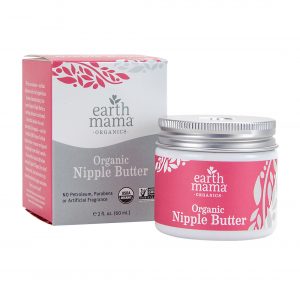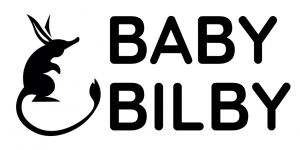Your 4 Week Old Baby
Tears, tummy time and tons of feeding

First month is fast aproaching
With bubba being almost a month old, it’s worth looking back at the past four weeks and contemplating the amount of growth and change that’s occurred, not just for your baby, but you as well.
From feeding at all hours of the night and day and all sorts of consistencies coming out the other end, to long sleepless nights and growth spurts, it’s been a journey for both of you. Taking stock of what’s happened so far doesn’t just help to give perspective, it’s helpful to form the foundation of how you continue to interact with this little miracle as you raise them up.
Keeping abreast of it all
By now you’ll likely have become familiar with cluster feeding (when your baby wants a lot of shorter feeds over few hours), as well as how often your baby goes through diapers. The amount of feeding is only going to increase as your baby grows, so here’s some tips and solutions for the more common issues related to breastfeeding. It’s worth noting that not everyone can breastfeed comfortably, or at all, and there’s nothing wrong with that. Formula is a great substitute for women who have trouble breastfeeding.
Mastitis – This occurs when a milk duct is blocked, causing inflammation. This is relatively simple to treat, most commonly by continued consistent breastfeeding and/or expressing. In more serious cases, antibiotics can be used as well as anti-inflammatories like ibuprofen, but this is best done when recommended by a doctor.
Dry/cracked nipples – This is quite common in early mothers, as the nipples haven’t yet “toughened up”. Using lanolin ointment or nipple balm helps to rehydrate the area and soothe inflammation. For mummas with sensitive skin, finding the right balm can make all the difference, and speaking to your midwife will help a lot here.
Problems latching/painful suckling – Sometimes it’s baby’s cheek and moth strength, sometimes the shape of mumma’s nipples, sometimes it’s something else entirely. Whatever the problem, there’s a few different ways around this. Using a nipple shield can help protect your sensitive areas from enthusiastic feeders, while pumping and bottle feeding can help with those who have trouble suckling properly.
Sore nipples – Similar to treatment for dry or cracked nipples, using a suitable balm after feeding can help. Another trick that sounds a bit odd but works wonderfully is chilled tea bags, particularly when the pain is worse.
In all these options, it’s recommended to continue breastfeeding, as the problems often resolve themselves, and continued feeding of the baby is important. Change your nursing pads regularly, switch between breasts during a feed and practice patience to nip it in the bud.
Your back and your baby
The strain of pregnancy leaves many with back pain, among other things. While this may initially be relieved once you’ve given birth, it can still become a problem. Constant carrying of the baby, poor posture due to tiredness (or let’s face it, flat out exhaustion) and fluctuating body weight can all put an extra toll on your back.
Taking care of your back while you’re pregnant isn’t always the easiest thing to do, so we’ve put together a couple of quick and easy ways to stave off back pain.
- Take 10-15 minutes each day to practice some post-partum yoga to help keep everything in check.
- When lifting up your baby, bend at the knees and keep your wrists straight.
- When carrying your little one for longer periods of time, try to use a baby carrier or sling. This will take the load off your back but also sooth them as well.
- Avoid putting them on your hip. As the baby grows, the weight will only increase and cause more strain. Try to stop the habit early.
- Swap between your right and left arm as you carry bubba to stop your back being lopsided.
If you’re already dealing with back pain, consider a back brace, physiotherapy or remedial massage (which can also be a nice treat yourself gift). Try to minimise painkillers as they tend to mask the symptoms and may lead to your back just getting worse.
Growth inside and out
All that feeding isn’t for nothing. Whether it’s bottles or boobs, your baby will have been feeding a lot the past week or two. Their bodies and brains are developing, and this week that’s starting to step up a notch.
Physical development is starting with the way they’re moving, especially their arms and hands. You’ll likely notice that your baby’s hand is moving up to their face. While this likely isn’t an intentional movement, it’s a good sign everything is moving in the right direction. You’ll also notice they should start to be lifting their head up and building strength in the neck so the they can look around more (though it’s likely you’ll be the object of their attention still for some time).
Speaking of looking around, their vision and hearing will be starting to sharpen. You’ll notice they will start to follow a moving object if it’s close enough, and reactions to noises will be more noticable. These are signs of mental interaction developing, so spending more time with bubba talking, playing and being close helps not only with your bond and mental health, but it’s helping train your baby’s brain!
A day in the life of a four week old
- Naps should be more regular, with a few over the day and one or two “stretches” over the night.
- Play time is more rewarding, with better visual recognition and tracking of movement.
- Feeding will be the same, if not more, than last week, as they keep growing.
- It might seem like they’re crying more, but they’re actually getting better at communicating with different types of cries.
- Lots of diapers. six or more a day are likely to be soaked as they’re feeding and growing, so make sure you’re stocked, whether it’s disposable or reusable.
Tips For You This Week
Tummy time
Now that your little one is moving a bit more, tummy time (having your child resting on their tummy rather than their back) is important to help them in many ways. From distinguishing sleep and play to building motor skills and other good habits, make sure things don’t got belly up.
Refer to the baby diary for cries
If you’ve been keeping a baby diary, you’ll have a pretty good reference for how your little one is communicating. Paying attention to the difference in their cries can help to find the right thing they want more quickly.
Nurse through the pain
While breastfeeding this early can lead to dry and sore, even cracked nipples, as well as mastitis, the best recommendation is to continue to feed. As you do, your nipples harden up, and the flow should become a lot easier.
Talk with baby more
While it might not be immediately apparent, their hearing and vision is developing rapidly. By spending time talking up close with your baby, you’re helping them learn how to communicate verbally and non-verbally. An added bonus is the strengthened bond that comes from them hearing your voice consistently.
Recommended Products

Sacroiliac cinch belt
The OAPL Sacroiliac Cinch provides stabilisation of the Sacroiliac (SI) joints through direct circumferential pressure. This device is constructed of a high quality elastic support containing self-moulding stays and 2 elastic cinch straps.
Its low profile design makes it ideal for use during pregnancy to manage SI joint instability and pain as well as supporting the abdomen.
Ventilated elastic provides additional comfort and elastic cinch belts help to provide greater SI joint control.

Organic Nipple Butter - Earth Mama
Made from completely natural and organic ingredients, it’s the perfect nipple balm for relief from soreness and dryness while also being good for your body and the environment.
Tummy Time! - A Fold Out Book

“Tummy time – placing a baby on his or her stomach only while awake and supervised – can help your baby develop strong neck and shoulder muscles, and promote motor skills.” – Mayo Clinic.
And this book will keep babies’ brains busy, too, while their muscles are hard at work. The high-contrast images on one side are mesmerising because, although young babies’ vision is blurry, they can see bold patterns with sharp light-dark contrast and saturated colour. Babies are also hard-wired to recognise faces, so there are baby photos on the other side to delight your baby, and an embedded mirror – because babies love looking at themselves!
The book can be spread out in front of them, or read like a book so you can enjoy reading time together.
See what else you can expect in our week to week parenting guide



